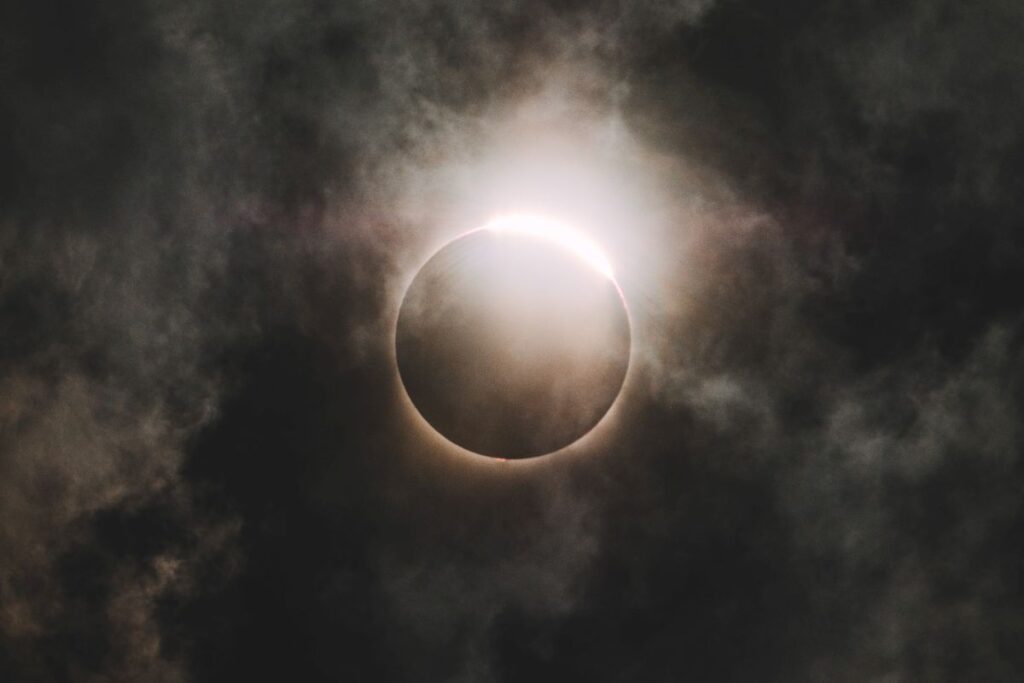WWW.UTILITYDIVE.COM
Gas, batteries and demand response will help to meet electricity demand when solar slumps.
A total eclipse on Monday will mean the loss of thousands of megawatt-hours of solar generation across portions of the United States – likely impacting more generation than in any previous solar eclipse, experts say.
Grid operators across the nation have been preparing for months and say they can navigate the event with no impact to reliability. But they also say their efforts are complicated by uncertain weather outlooks, and eclipse-related behavioral changes that make forecasting energy demand difficult.
While the “path of totality” will pass over just a portion of the solar facilities in the U.S., and cloud cover will impact the extent of lost production, “the effects of this eclipse will be significant on solar generation across the country,” said Solcast lead data scientist Hugh Cutcher. The company offers solar irradiance data and forecasting technology.
Solcast estimates that across all U.S. grids, maximum generation losses over the span of the eclipse could be up to 39.9 GWh, with about 16.2 GWh of the loss from rooftop solar.
US solar plants in the path of totality for the April 8 eclipse
Grid operators including ERCOT, PJM and the New York ISO are planning for losses in solar production during the eclipse, but say that the total amount of lost generation will largely depend on the weather that day.
Despite the reduced renewables, “at the end of the day, we’re going to be fine,” said Michael Lee, CEO of Octopus Energy US, a demand response provider operating in the Texas market.
Experts broadly expect natural gas to take up most of the solar slack during the eclipse.
“We anticipate gas being the most likely solution, as the eclipse is very predictable, and every grid has the gas infrastructure to meet this demand event, which will be more than last year, both due to the path of the eclipse and increases in capacity since October,” Harry Woods, Solcast head of marketing, said in an email.
Flexible loads and batteries will also play a role, said Lee. “Demand response and flexibility can create a low-cost grid,” he said. But ultimately, “this event is only for an hour, and managing millions of thermostats while people are typically going to be outside looking at the eclipse is low-hanging fruit.”
California has long been known as a leader in solar generation but will see relatively mild impacts – perhaps losing 5%-6% of typical daily solar generation – due to the path of the eclipse, according to Solcast. PJM Interconnection and the Electric Reliability Council of Texas markets could see losses up to 10%-11% of daily solar generation.
But forecasts of solar generation losses aside, how are grids in different regions of the U.S. planning for the upcoming event?
California ISO
California is no stranger to high penetration solar or eclipses: In October, it experienced an annular eclipse which impacted the grid from about 8:40 a.m. to 9:30 a.m. During that event, grid scale solar production dropped off at a rate of about 82 MW/minute, ultimately reducing output by about 9,600 MW, relative to production on a typical clear sky day, according to California Independent System Operator officials.
Monday’s eclipse will have less of an impact than the 2023 event, but it is somewhat complicated by the state’s rapid solar buildout. During the October 2023 eclipse, there was more than 16,500 MW of grid-scale solar capacity installed throughout CAISO, according to the grid operator. Now there is more than 18,500 MW.
“Even though it’s only been a little over six months [since the 2023 eclipse], we’ve had quite a bit of growth in both grid-scale and behind-the-meter solar” across CAISO and the Energy Imbalance Market it manages, ISO Senior Energy Meteorologist Jessica Stewart said during a March planning meeting.
In the upcoming event, Stewart said the state will experience eclipse impacts from about 10 a.m. to 12:30 p.m., with grid-scale solar capacity dropping about 79 MW per minute until maximum solar obfuscation. On the return, solar will ramp up at a rate of about 84 MW per minute, increasing about 6,700 MW to full production.
Pricing impacts of the solar eclipse will not be known until day-ahead and real-time price formation occurs, officials said.
ERCOT
The grid operator for most of Texas said it expects solar generation to be impacted for a three-hour period, with greatest impact at 1:40 p.m., reducing solar generation to about 7.6% of its maximum clear sky output.
ERCOT has asked all market participants to “monitor the operating conditions for this day and make adjustments to current operating plans as needed,” but expects normal operations during the event.
The grid operator is “working with solar forecast vendors to ensure the forecasting models account for the impact of the eclipse,” according to a planning presentation given to the grid operator’s Reliability and Operations Subcommittee last month. “ERCOT will pre-posture the system as necessary to meet both the down and up solar ramps and use ancillary services for additional balancing needs.”
That will likely include the new ERCOT contingency reserve service, said Lee, which will keep thermal and battery assets on standby. But the “primary tool” to meeting changing demand during the eclipse “is still the energy price.”
“As we see supply changing, real-time energy prices will fluctuate,” he said. “And that fluctuation is great because it inspires more generation to come online, and it also inspires load flexibility to start participating.”
PJM Interconnection
Just how much solar generation is lost “will depend on the weather pattern that day,” according to Michael Stewart, PJM senior engineer, load forecasting. He outlined preparations at a March 7 Operating Committee meeting.
The grid operator is preparing for the loss of 80%-85% of production from 8,200 MW of grid-connected resources. There are also about 4,800 MW of behind-the-meter resources that will be impacted, increasing demand on the grid.
There are several variables that could impact load, including school closures or eclipse-related travel, Stewart’s presentation noted. This is “not a holiday, but not a normal Monday.”
“With a close eye on weather forecasts, PJM is preparing to dispatch generation as needed to respond to solar power losses, including reserve and regulation resources as required,” the grid operator said in a blog post. “Reserve resources can provide needed backup generation when called upon, while regulation resources can provide energy to help control voltage and frequency on the system.”
New York
In 2017, the New York Independent System Operator lost about 500 MW of output during an eclipse that obscured the sun by about 75%.
“Today, we have five times as much solar generation throughout the state, but the amount of cloud cover will ultimately determine how much generation is lost during the eclipse,” Mark Taylor, a technical specialist and meteorologist at NYISO, said in a statement.
If skies are clear on April 8, the grid operator said it expects solar energy production to be about 3,500 MW as the eclipse begins. Production will then drop precipitously across a little more than an hour, likely to about 300 MW, before rising back again to 2,000 MW. The sun will be completely obscured for up to 3.5 minutes at varying parts of the state between 3:15 p.m. and 3:30 p.m.
The ISO’s solar forecasting tools “anticipate how much solar energy production the system can expect throughout the day, and helps our planners and operators determine resource needs to meet expected demand,” the operator said in a blog post. “If unexpected circumstances arise and solar resources aren’t producing power as initially forecasted, the NYISO’s operations team must find a way to make up the difference.”
Midcontinent ISO
The last time an eclipse’s path crossed the Midcontinent Independent System Operator footprint was in 2017, when the grid operator had just 100 MW of solar on its system. Today there is more than 5,000 MW.
“We don’t expect any reliability-related issues,” MISO said in an April 2 blog post.
The eclipse path crosses MISO’s South and Central regions, and two control centers are located in the path of totality. The grid operator anticipates “shifts in darkness” occurring from 1:30 to 4:25 p.m. On a sunny day, the grid operator said it could see an estimated 4 GW drop in generation over the course of 90 minutes, followed by a 3 GW rebound.
While forecasting electricity demand for a typical day “is typically straightforward,” MISO noted that Monday “will not be a typical spring day.”
School closures, changed business hours, busier hotels and restaurants, and potentially cooler temperatures because of the darkness “make it more challenging to accurately forecast electricity demand for the day,” the grid operator said.
Data graphic by Diana DiGangi and Greg Linch.



















